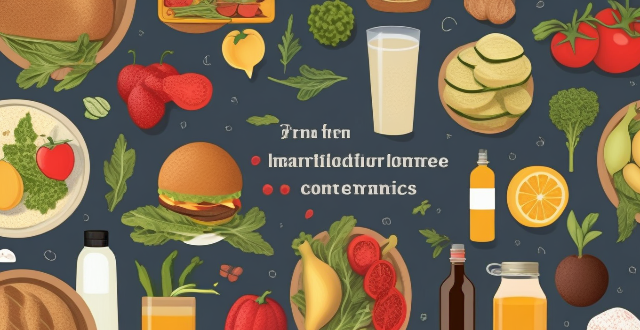Tariffs and trade agreements significantly impact the price of imported foods, either increasing or decreasing costs. Tariffs are taxes on imported goods intended to protect domestic industries, applied as ad valorem or specific rates. Trade agreements can lower or eliminate tariffs, making imported goods more affordable. These agreements also set quality and safety standards. Factors like domestic production costs, transportation expenses, and exchange rates affect final food prices. Understanding these elements helps consumers make informed choices and supports policies for diverse, high-quality, and affordable food options.

How Tariffs and Trade Agreements Affect the Price of Imported Foods
Tariffs and trade agreements play a significant role in determining the price of imported foods. These economic tools can either increase or decrease the cost of imported goods, depending on their nature and purpose. In this article, we will explore how tariffs and trade agreements affect the price of imported foods.
What are Tariffs?
A tariff is a tax imposed on imported goods by a country's government. The primary purpose of tariffs is to protect domestic industries from foreign competition by making imported goods more expensive than locally produced goods. Tariffs can be applied as a fixed rate per unit or as a percentage of the product's value. When tariffs are applied to imported foods, they can significantly increase their price for consumers.
Types of Tariffs
There are two main types of tariffs:
1. Ad valorem tariffs: These tariffs are calculated as a percentage of the product's value. For example, if an ad valorem tariff of 10% is applied to a $10 bag of imported coffee, the consumer would pay an additional $1 in taxes.
2. Specific tariffs: These tariffs are applied at a fixed rate per unit of the product. For example, if a specific tariff of $2 per kilogram is applied to imported cheese, a 2-kilogram block would have an additional $4 in taxes.
What are Trade Agreements?
Trade agreements are formal agreements between countries that establish rules for trade between them. These agreements can lower or eliminate tariffs on certain goods, making them more affordable for consumers. Trade agreements can also establish standards for product quality and safety, which can impact the availability and price of imported foods.
Types of Trade Agreements
There are several types of trade agreements, including:
1. Bilateral agreements: These agreements are made between two countries and typically involve reducing or eliminating tariffs on specific goods. For example, if Country A has a bilateral agreement with Country B to reduce tariffs on bananas, consumers in Country A may see lower prices for imported bananas from Country B.
2. Multilateral agreements: These agreements involve multiple countries and often cover a broader range of goods and services. For example, the North American Free Trade Agreement (NAFTA) eliminated most tariffs on agricultural products traded between Canada, Mexico, and the United States, resulting in lower prices for consumers in all three countries.
3. Regional trade agreements: These agreements involve groups of countries within a specific geographic region, such as the European Union (EU). Regional trade agreements often aim to create a single market for goods and services, which can lead to lower prices for consumers due to increased competition and reduced transportation costs.
Impact of Tariffs and Trade Agreements on Imported Food Prices
The impact of tariffs and trade agreements on imported food prices depends on several factors, including:
Tariff Rates
Higher tariff rates generally result in higher prices for imported foods, as the additional cost is passed on to consumers. Conversely, lower or eliminated tariffs through trade agreements can lead to lower prices for imported foods.
Domestic Production Costs
If domestic production costs for a particular food item are high, importing that item may still be cheaper even with tariffs applied. In this case, the price of imported foods may not be significantly affected by tariffs or trade agreements.
Transportation and Logistics Costs
The cost of transporting and distributing imported foods can also impact their final price. If transportation and logistics costs are high, even low-tariff or tariff-free imported foods may still be more expensive than locally produced alternatives.
Exchange Rates
Fluctuations in exchange rates between countries can also affect the price of imported foods. If the currency of the importing country weakens relative to the exporting country's currency, imported foods may become more expensive due to increased costs for the importing country's businesses.
Conclusion
In conclusion, tariffs and trade agreements play a crucial role in determining the price of imported foods. Higher tariffs generally result in higher prices for consumers, while trade agreements that reduce or eliminate tariffs can lead to lower prices. However, other factors such as domestic production costs, transportation and logistics costs, and exchange rates also contribute to the final price of imported foods. By understanding these factors, consumers can make informed decisions about their food purchases and support policies that promote affordable access to a diverse range of high-quality foods.